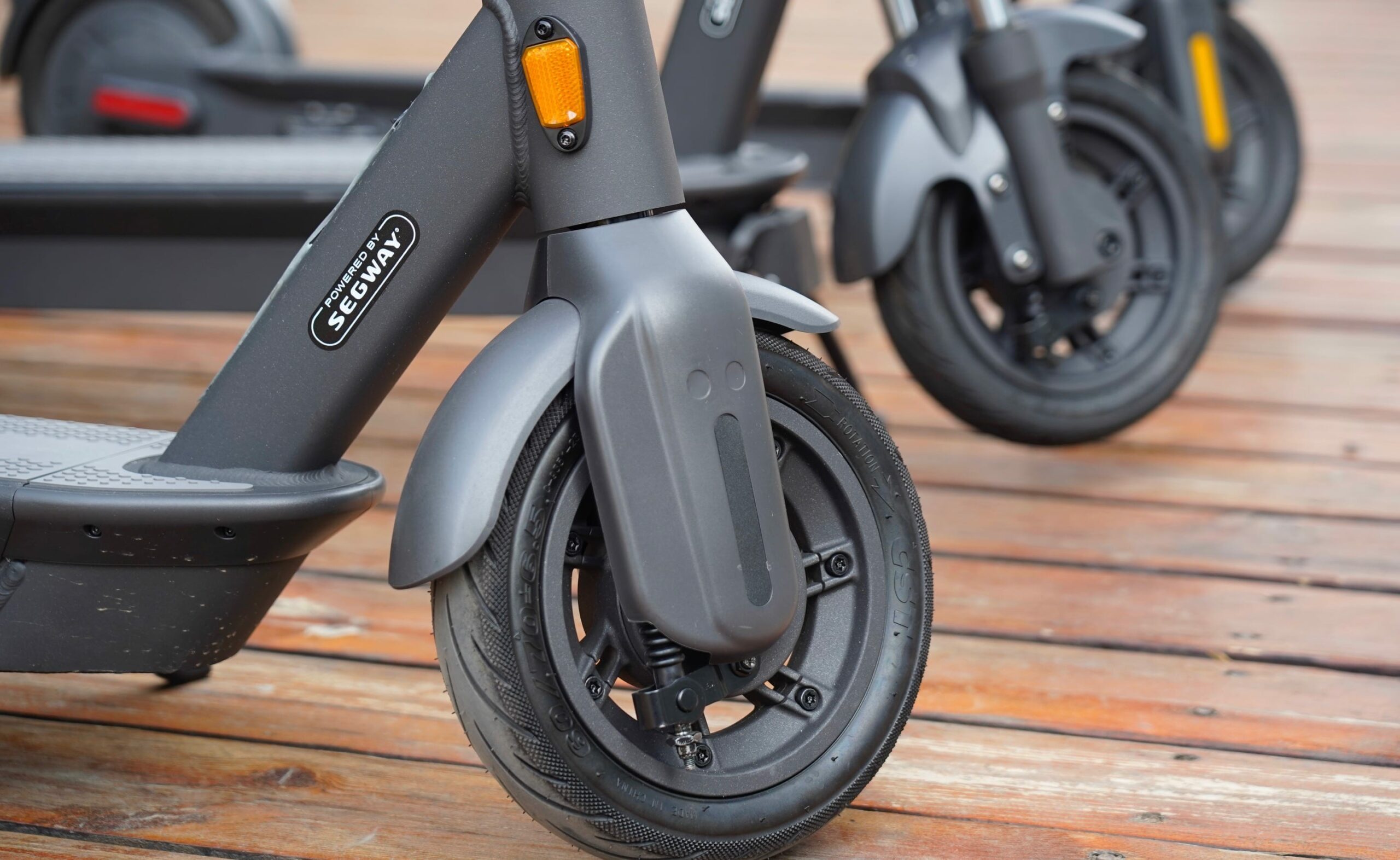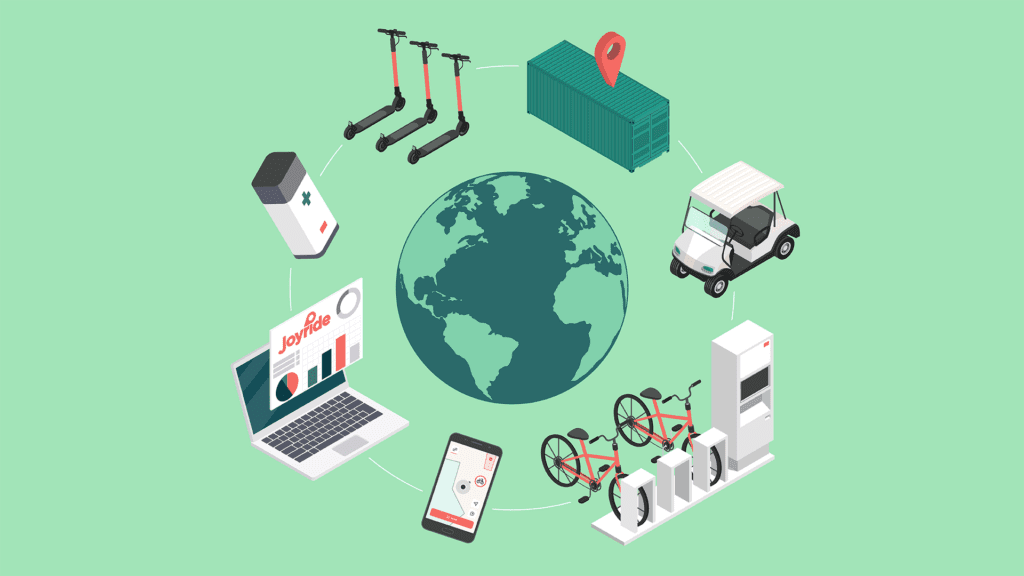When speaking with Tony Ho, Segway’s VP of Global Business Development, there’s no shortage of robotics talk, industry predictions and electric scooters—literally. Amidst a global pandemic that’s spurring many manufacturing delays and stalled resources, Segway is continuing to successfully feed high demand for scooter hardware both for the shared market and personal use.
The company’s approach boils down to turnkey solutions that sync with Joyride in more ways than one: We’re both enabling small and mid-sized micromobility operators to not only launch their fleets as quickly and seamlessly as possible, but also strategically keep pace with the big industry players. In our most recent partnership discussion, Ho explains why innovation and catering to scooter startups is relevant right now, when opportunities in untapped markets are especially ripe.
Please tell us about your lineup of scooters being offered through Segway Commercial.
While Segway Ninebot focuses on the retail market, we have a series of products designed specifically for scooter-sharing fleets. These vehicles are built for durable shared systems from the onset, meaning they have swappable batteries, contain greater shock absorbers and are tough enough to endure extreme conditions, including vandalism and rain downpours. We have three scooters for shared use: Segway Max, Max Pro and Max Plus, and another model coming soon. We’re always working on ways to make our vehicles more integrated and better protected.
How do your vehicles integrate with Joyride’s software platform?
Our goal has always been to make anyone—whether you’re a huge company or a one-person startup—have an out-of-the-box experience when establishing his or her fleet. And that comes down to sophisticated integrations and IoT functionality. Our vehicles are manufactured with IoTs and 4G connectivity built into them. Once customers receive their scooters, they can access our cloud through Joyride’s backend through a simple API. This live code controls the scooters and accesses information such as GPS location and maintenance data, including frequency of battery charges. Think of an Apple iPhone. There’s the phone itself (our scooters) and then there’s the backend iCloud operating system (in this case, Joyride’s software platform). Our API is a line of code that’s encrypted and protected, but it’s so simple for an engineer to configure. This is why it’s easy for our companies to work together. You can white-label our scooters but the features are the same for any company no matter the size and budget, and I know Joyride prides itself on having the same mentality.
Where are the big opportunities in the scooter industry right now?
On the retail side, demand is growing like crazy. This is partially because the sharing model is educating the crowd and people want to use scooters for more than just an hour at a time. So this year is a big retail year; last year was a sharing year. But there’s more to it. There’s a big opportunity happening in the sharing space right now. The billion-dollar guys have cooled down quite a bit due to a softness in venture funding, but many, many small companies are coming up strong. We are seeing people experiment with new business models. We’re seeing demand come from small campuses and more remote locations that aren’t the traditionally major scooter battle grounds—but these cities and counties still need last-mile solutions. Consider the Asia-Pacific region for a minute. People have been underestimating the South Korean market. There is a huge number of scooter-sharing companies in South Korea right now. And we have more than 50% of the market share there. It’s also worth noting that things are really picking up in Canada and the UK. These countries are in the spotlight because regulations are relaxing. So the scooter-sharing phenomenon is spreading beyond warm, big countries and now going pretty much everywhere.
How has the pandemic impacted micromobility?
Our growing retail segment is directly influenced by the pandemic. Cities are really worried that in post-pandemic life cars will come back, gas-fueled and all, so policy makers are really leveraging opportunities now to make micromobility more permanent. Many European cities are offering financial incentives for people to purchase scooters through rebates. We see daily and weekly rentals making a lot of sense, like what’s being offered through Joyride Keep. And more innovative business models will be coming up. There will be thousands of entrepreneurs who want to do peer-to-peer sharing of scooters as people avoid mass transit and sitting in cars. And they can be their own renter, and that’s quite exciting.
How are you keeping up with high demand for electric scooters?
We’re running flat out. We’re competing with auto companies for batteries because there’s such a high demand. These are good problems for us to have. But we own our factories in China, which makes us close to the supply chain, and we make sure we always have inventory at our U.S. warehouse. If a company is looking for tens of thousands of scooters, they will wait for the factory lead time. When it comes to smaller fleets, if we have scooters in stock, we can ship anywhere in North America within a week. So you could say we even favor the smaller guys, since you can instantly buy as few as a box of four scooters. That’s quite different from having to adhere to the supply chain and pay a huge deposit before doing business. This is a quasi-retail approach to the sharing mentality because our goal is for smaller operators to get off the ground easily. And this becomes even more simplified with the Joyride approach to flexibility and scalability built into the framework.
What’s next for Segway?
Robots! Seriously. Our KickScooter T60 semi-automatic remote dispatchable shared scooter is coming out soon. The definition of robots is always very blurry. Scooters are already smart, they have GPS tracking inside and have sophisticated software powering it. We aim to develop things so the vehicles sense more, see more and do more. At Segway Robotics, we are already experimenting with some operators. We will open things up to everybody soon, and software platforms like Joyride will have API access. So in theory, the Joyride app could drive the robot and summon it anywhere. For operators, this will make things easier to rebalance their fleets. Ultimately, the goal is to have autonomous fleets in the next two to three years.
To learn more about how Joyride is empowering operators to quickly launch and scale their fleets within a matter of days, contact our sales team here.






